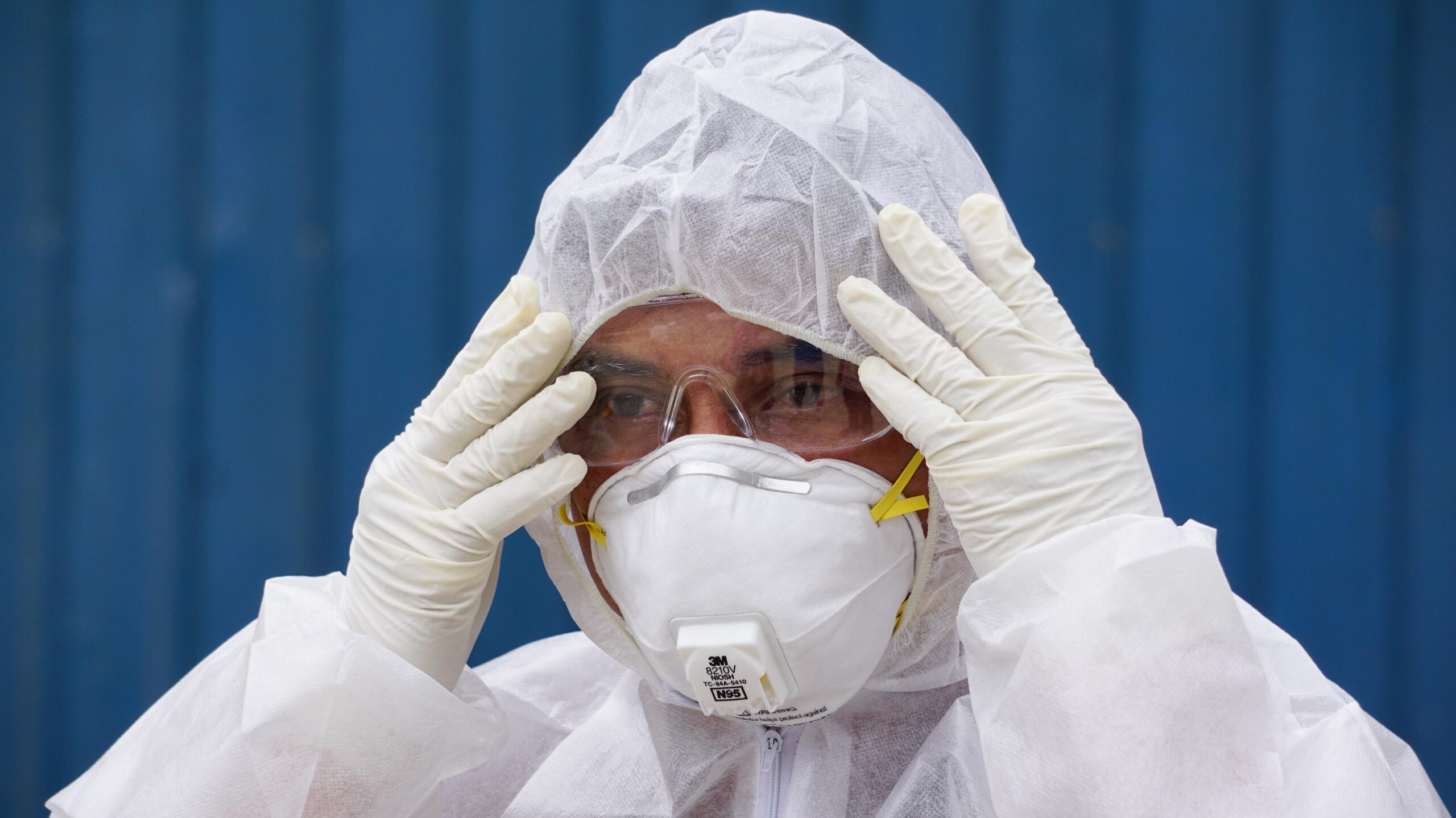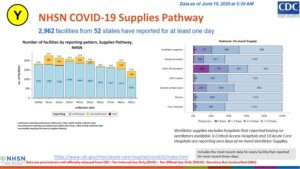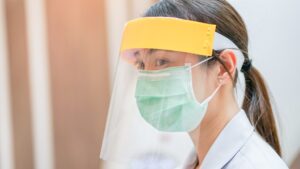The PPE Shortage Nightmare is Far From Over — It’s About to Get Worse

Given the lack of discussion in the media on supply chain shortages in healthcare, one would think that this crisis has been averted, and that shortages of Personal Protective Equipment (PPE), medicines, and hospital supplies is now a history lesson. Think again.
Recent data that I obtained from a source identifies just how bad this problem continues to be. Because of the increased media focus on BLM protests, Trump non-rallies, and other news, the public’s attention seems to have been diverted from the fact that hospitals, and particularly acute care facilities, are still very dangerous places to be for healthcare workers.
Consider the following summary of National Healthcare Safety Network (NHSN) recorded on June 10, 2020. Some may not know that the NHSN is part of the CDC, and is the nation’s most widely used healthcare-associated infection tracking system. NHSN provides facilities, states, regions, and the nation with data needed to identify problem areas, measure progress of prevention efforts, and ultimately eliminate healthcare-associated infections. Here is what the current statistics shows:
- Acute-care national estimate of number of inpatients with COVID-19: 42,678 (39,751-45,604) (this may be at a plateau over the past week or so)
- Acute-care, national crude percentages:
- 9% of inpatients have COVID-19 (crude percent) (down from about 22% at peak)
- 15% of COVID-19 inpatients are on a ventilator (crude percent)(had been quite consistent at about 18% but seems to be dropping over the past 1-2 weeks)
- 18% of in-use ventilators are occupied by COVID-19 patients (crude percent)(down from peak of 45% in early April)
- 18% of facilities have more than 80% of their ICU beds filled (crude percent) (has been consistent at 17-18% throughout)
- 40% reporting facilities are reporting not able to obtain N95 masks (a figure that has not changed significantly over the past few weeks)
 In addition, about 16% of acute care centers have severe shortages of nurses and aides. This is particularly bad in states like Hawaii, Indiana, Ohio, Oklahoma, and Utah. As the number of COVID cases continues to escalate exponentially in states like Georgia, North Carolina, South Carolina, Arizona, and Texas, we are likely going to see new emerging shortages in these states as well.
In addition, about 16% of acute care centers have severe shortages of nurses and aides. This is particularly bad in states like Hawaii, Indiana, Ohio, Oklahoma, and Utah. As the number of COVID cases continues to escalate exponentially in states like Georgia, North Carolina, South Carolina, Arizona, and Texas, we are likely going to see new emerging shortages in these states as well.
The problem of course is that we do not have a good national pandemic strategy for PPE, and many of the suppliers for masks and other key goods are in China. Although the volume of US imports of PPE has gone up, many of these shipments are not certified by NIOSH or the FDA, and may often not comply with regulatory requirements. A slew of counterfeit goods has also entered the company through online sales and dubious brokers, leading to further confusion in the marketplace. The number of states that report no facility shortages of PPE whatsoever is only in the 20% range, meaning that hospital personnel are still operating with shortages of PPE, that not only puts them at risk of getting sick, but also contributes to the nurses and aides shortages when they do get sick. This also slows down the ability of testing, as PPE is needed in physician offices to facilitate testing, which is also not being reported properly.
 As one consultant I spoke with noted, “I’m surprised that this many months into this pandemic that so many people and media reports are still conflating PCR and antibody testing into a single category of “testing” and utilizing the results from both of these tests to imply the same outcome, when they do not.”
As one consultant I spoke with noted, “I’m surprised that this many months into this pandemic that so many people and media reports are still conflating PCR and antibody testing into a single category of “testing” and utilizing the results from both of these tests to imply the same outcome, when they do not.”
What this means is that conservation measures are continued to be followed. In many cases, this means re-using gowns, N-95 masks, face shields, surgical supplies, and other materials. While ventilators supplies are temporarily in reasonable shape, shortages also exist in different places.
We still have a long way to go before COVID is finished, so hang on. Sourcing of PPE has never been more important. It is needed for healthcare providers to continue testing patients who are suspected of having COVID, and is also going to play an important role in opening up critical businesses, protecting first responders, and enabling a return to normal. Wearing masks is now becoming law in many states, including North Carolina, and the need for masks to prevent the spread of the virus will only continue to grow. We may see the need for a domestic PPE industry to develop, but this doesn’t occur by snapping one’s fingers, a concept that many lawmakers fail to understand.


